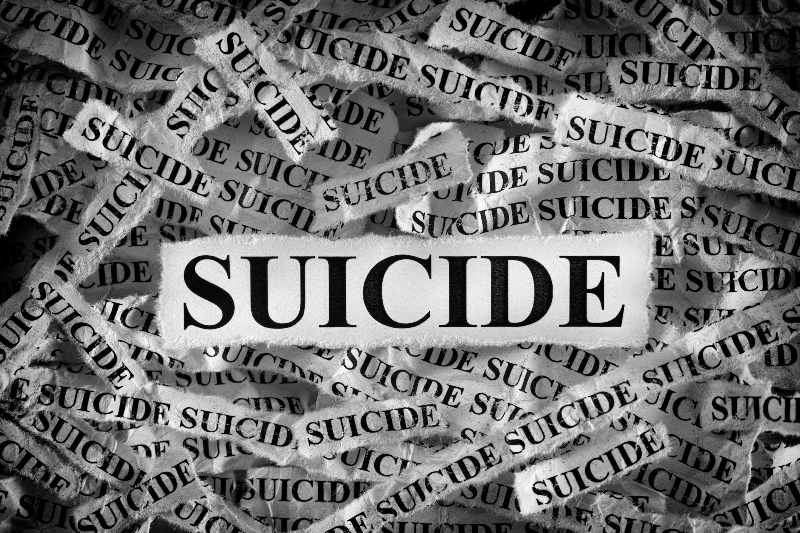
Every 40 seconds, a person dies by suicide somewhere in the world and many more attempt suicide.1 The prevalence of suicidal behavior is greatest in young people between 15-29 years of age who live in low- and middle-income countries where resources and services are limited for early identification, treatment, and support of people in need.1 The scientific community has made strides over the years in better understanding this complex phenomenon that involves biological, genetic, psychological, social and cultural factors. However, much remains to be learned about suicidal behavior—especially in the Muslim world. Suicide is an emerging public health problem across many Muslim-majority countries that is associated with factors including, but not limited to, gender inequality, lack of freedom and liberties, and unemployment.2 Several of these countries legally sanction suicidal behavior as a crime punishable by fines and jail time,3-4 which in effect has heightened public stigma toward suicidal behavior.
A case in point is Pakistan, where official mortality statistics on suicide are not available nor reported to the World Health Organization (WHO).5 While some estimates place the rate of suicides in Pakistan at 7.5/100,000 population,1 suicide (along with deliberate self-harm) is a hidden epidemic that is grossly underreported. Given the perceived shame associated with such acts, families fear being ostracized by their communities, and legal ramifications deter those in need from seeking professional help when in crisis.6 Prior research offers a dearth of knowledge in terms of elucidating the etiology of suicide and how families, communities and the society at large influence suicidality in Pakistan. Epidemiological studies provide some insight, and emphasize that gender is an important determinant of suicidal behavior in Pakistan. Those at greatest risk include young men with limited prospects for economic advancement, and young married women who face curtailment in education, endure family violence, and are pressured to have children early in marriage.5
With over 242 million inhabitants, Pakistan is the 5th most populous country in the world and also has one of the highest youth populations with approximately 55% being aged below 25 years.7 Therefore, this emerging social problem in Pakistan deserves more attention from policy-makers, public health officials, researchers, religious leaders, and advocates within lay communities. The WHO calls for countries to devise national suicide prevention strategies that indicate the government’s clear commitment to dealing with the issue of suicide.1 In Pakistan, one obvious solution would be to decriminalize suicide by repealing repressive laws,3 which may promote reporting and help-seeking without fear of being prosecuted5—ultimately saving many lives. But until such sweeping changes come, public health efforts should focus on making primary health care and mental health services more accessible, especially to high risk subgroups; improving surveillance; restricting access to common methods of suicide (e.g. pesticides, firearms); destigmatizing suicide; and raising public awareness as well as training for health care workers, educators, and law enforcement.1, 3, 8
Author Bio:

Qais Alemi, PhD, MPH, MBA/strong>
Dr. Alemi is an Associate Professor in the Department of Social Work & Social Ecology. He teaches courses in quantitative and qualitative research methods. His research interests include global mental health, namely, examining the psychosocial well-being of populations living in conflict zones and of refugees and their resettlement challenges.
- World Health Organization. (2014). Preventing suicide: a global imperative. https://www.who.int/publications/i/item/9789241564779
- Eskin, M., AlBuhairan, F., Rezaeian, M., Abdel-Khalek, A. M., Harlak, H., El-Nayal, M., ... & Khatib, S. (2019). Suicidal thoughts, attempts and motives among university students in 12 Muslim-majority countries. Psychiatric quarterly, 90(1), 229-248.
- Khan, M. M. (2005). Suicide prevention and developing countries. Journal of the Royal Society of Medicine, 98(10), 459-463.
- Johnson, S. (2021). Suicide still treated as a crime in at least 20 countries, report finds. https://www.theguardian.com/global-development/2021/sep/09/suicide-still-treated-as-a-in-at-least-20-countries-report-finds
- Shekhani, S. S., Perveen, S., Hashmi, D. E. S., Akbar, K., Bachani, S., & Khan, M. M. (2018). Suicide and deliberate self-harm in Pakistan: a scoping review. BMC psychiatry, 18(1), 1-15.
- Naveed, S., Qadir, T., Afzaal, T., & Waqas, A. (2017). Suicide and its legal implications in Pakistan: a literature review. Cureus, 9(9).
- United States Census Bureau. (2022). World Population. https://www.census.gov/popclock/print.php?component=counter
- Aggarwal, S., Borschmann, R., & Patton, G. C. (2021). Tackling stigma in self-harm and suicide in the young. The Lancet. Public health, 6(1), e6.
